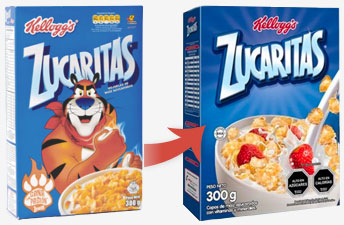This law introduced mandatory front-of package labeling, marketing restrictions, and school sales/marketing policies, which all use same nutrient profiling model to identify which products are subject to regulation. Packaged food and beverage products containing added sugars, sodium, or saturated fat and exceeding set thresholds for content of total sugar, sodium, saturated fat, or overall calories are considered “high in” products subject to all regulations. The law was implemented in three phases (in June of 2016, 2018, and 2019) with increasingly strict nutrient thresholds.
- Front-of-package warning labels: “High in” products must carry black octagon “stop sign” octagonal warning labels for each nutrient in excess of thresholds (calories, sugar, saturated fat, and/or sodium). Products with a “high in” warning label for a given nutrient/calories cannot carry a health/nutrient claim related to that nutrient (or calorie content).
- Marketing restrictions: “High in” products may not use child-directed marketing strategies or appeals in any media/marketing (including use of brand characters on packaging);
- School sales & marketing: “High in” products cannot be marketed, sold, or offered for free at kiosks, cafeterias, and feeding programs at schools and nurseries.

